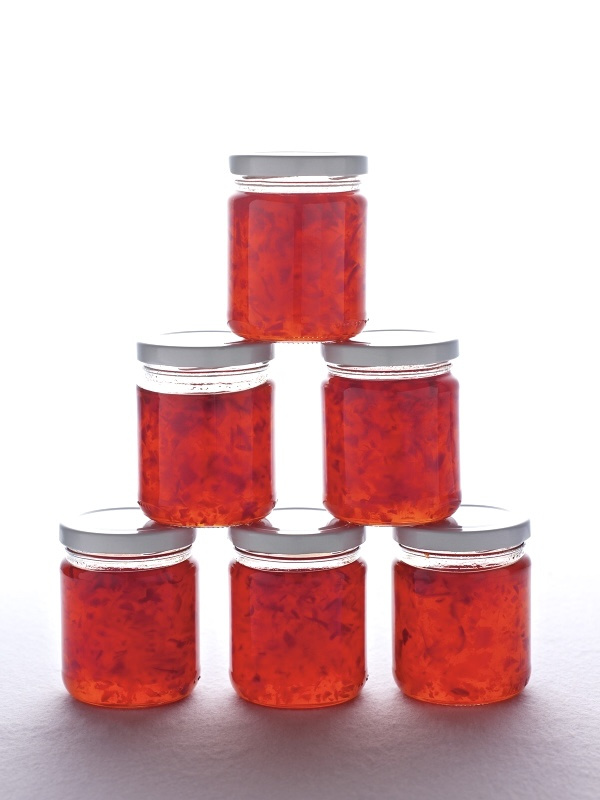Chilli Jam Queries
Asked by MaureenLeStrange. Answered on 4th December 2015
Full question
My Chilli Jam has not set and the chillies and peppers are floating on top - what have I done wrong?
Hi, I have been making your chilli jam recipe for family and friends for years and it is always a hit! I would like to know if I can increase the ingredients to make a triple batch of jam. However, would the cooking times increase as well as the cooling time? Thank you for your advice in advance. Best, Tonia
Can I use something else instead of the cider vinegar. No alcohol allowed for religious reasons.
Hi there. I made the Chilli Jam using jam sugar and had this on the rolling boil for the required length of time and at this point the flecks of chilli stayed in suspension, after letting it cool down for the period of time required there was a skin forming on the surface of the jam so this was put this into sterilised jars. This was 2 days ago and it has still not set, what could I have done wrong and can I do anything now to rectify the issue? I look forward to your replies JC
Our answer
Nigella's Chilli Jam is made by using "jam sugar" (or gelling sugar). This is sugar that has pectin added to it. It should not be confused with "preserving sugar", which is sugar in larger crystal form that dissolves more slowly than regular crystallized sugar. Pectin is needed for the setting process and if you have used just regular sugar or preserving sugar then the jam will not set, though could be used as a sweet chilli sauce. It could also be that you have put the jam into jars before it has had time to cool slightly and thicken. You need to let the jam stand for 30 to 40 minutes, so that it becomes more viscous and the pepper flecks are suspended throughout the jam. It also needs to cool completely (overnight) in the sealed jars to set fully.
You also need to make sure that the jam has reached setting point. If you have a sugar thermometer then it needs to reach at least 104c (220F). You may also like to use the cold plate test. Before you make the jam put 2-3 freezer-proof and heatproof plates in the freezer to chill. Once the jam has boiled for the prescribed time, take it off the heat and carefully put a teaspoonful onto one of the plates. Leave for one minute then push your finger through the jam. If the jam flows back then it needs further boiling and you should return the pan to the heat, boil for a further 2-3 minutes and test again. If the jam does not flow back (so your finger can draw a line through the cooled jam on the plate) then it has reached setting point.
Unfortunately we would not recommend making the jam in double or triple quantities in a domestic kitchen. Firstly you would need and extremely large saucepan as the jam mixture should not come more than one-third to halfway up the side of the pan before boiling. If there is too much then it will boil over very easily. Secondly most domestic cookers do not have the heat output to bring large quantities of the jam up to the correct temperature for setting quickly enough. If you boil the jam for too long, trying to get to setting point, then the pectin will start to deteriorate and the jam may not set. Instead we would suggest making the jam in three seperate batches.
Nigella uses cider vinegar in the jam as it has a fairly mild flavour. Vinegar is usually fermented to the point where there is no longer any alcohol present, though sometimes some of the original alcohol added back after fermenting for flavour. We understand that this is unusual for apple cider vinegar. The closest alternative with a mild flavour is distilled white vinegar. Distilled white vinegar is usually made from a corn-based alcohol (so still may not be suitable) but during the fermentation process all of the alcohol is converted to vinegar, so many people consider it to be alcohol-free. However we would strongly recommend confirming with one of the relevant bodies for your religion before using either vinegars, as opinions can vary.





Tell us what you think
Thank you {% member.data['first-name'] %}.
Explore more questionsYour comment has been submitted.